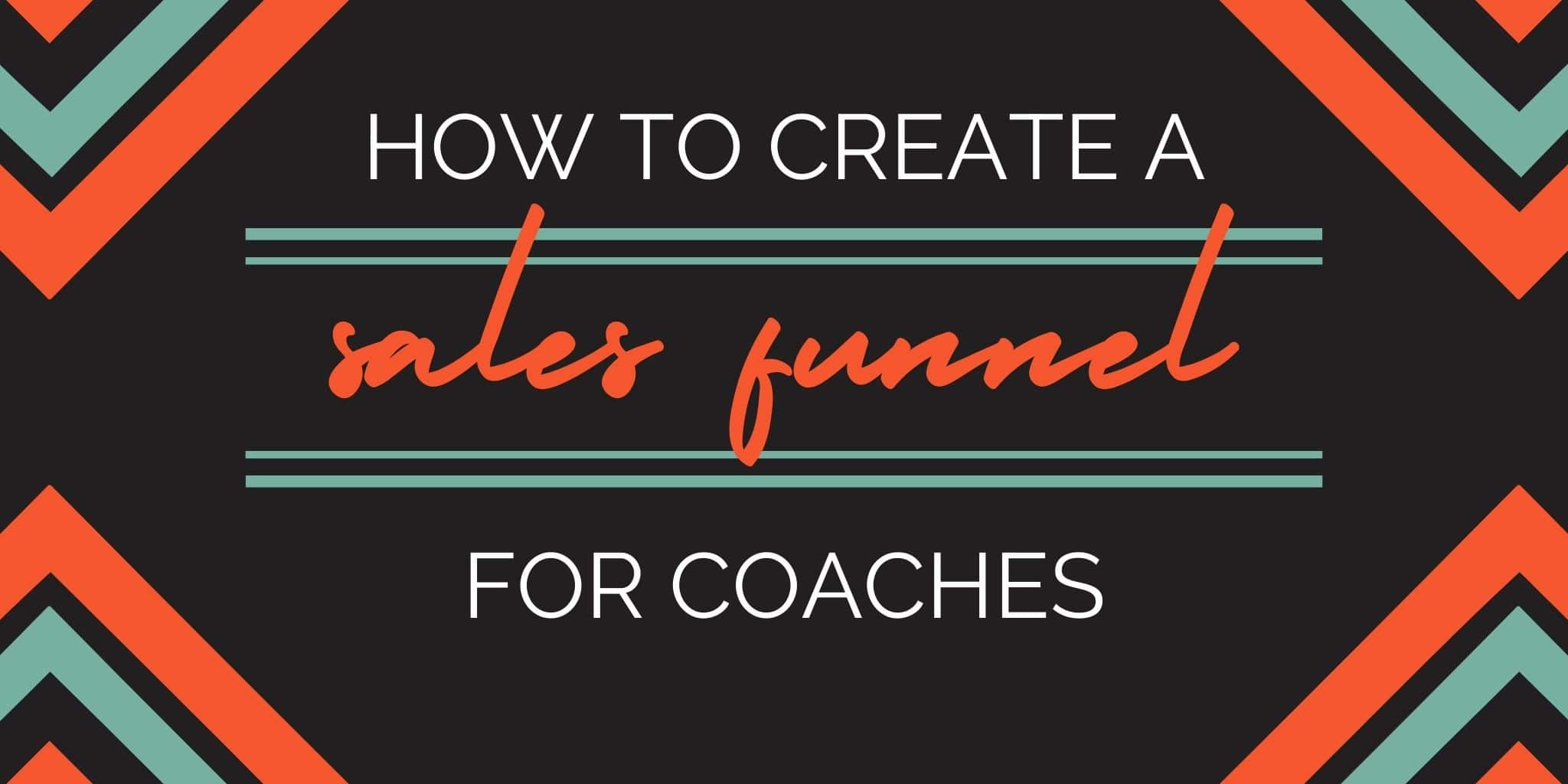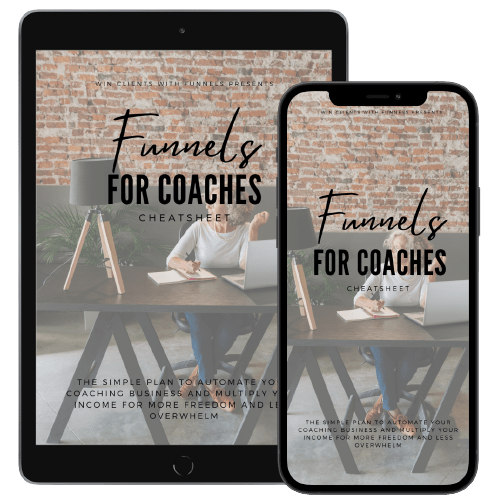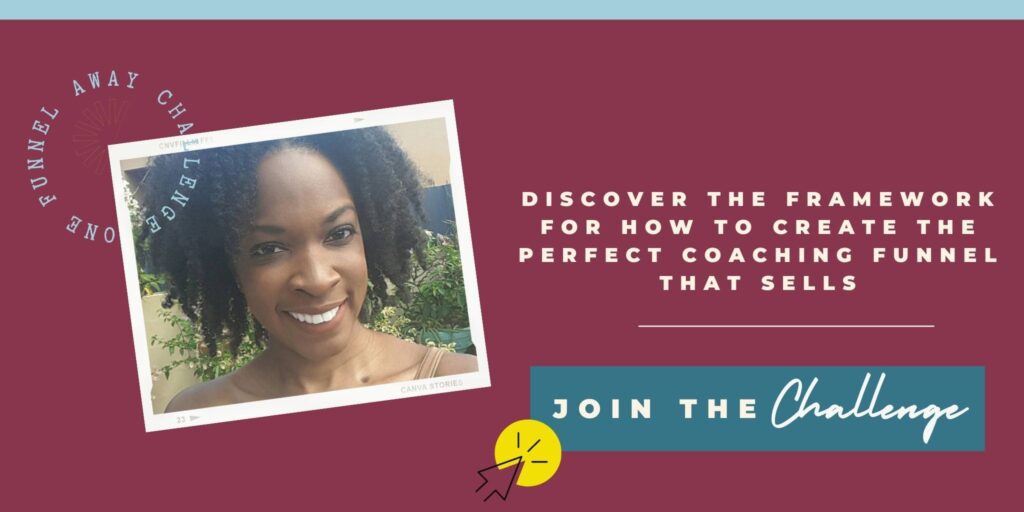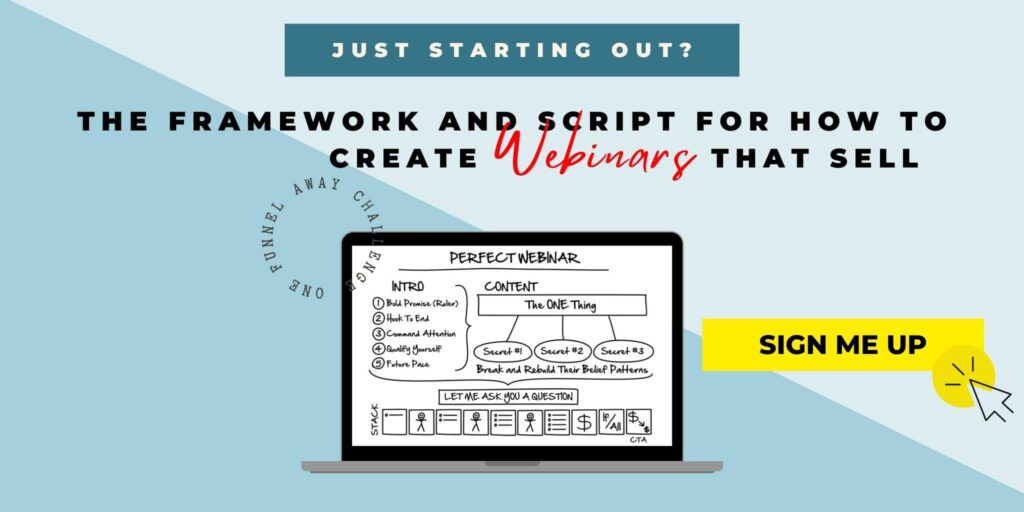How To Create A Sales Funnel For Coaches

By DAWN-MARIE NESBITT

How great would it be if you could just set up a fantastic coaching business and then watch clients rushing to sign-up?
Unfortunately, things aren’t that simple. As much as we all wish that were the case, clients never simply line up.
How to create a sales funnel for coaches? To create a high-converting sales funnel for your coaching business, you need to have a thorough understanding of why you need a coaching funnel in the first place. You also need to know how to adapt different types of sales funnels to boost your coaching business.
Select the best online softwares for all your tasks from scheduling and webinar platforms to email tracking and automated replies, set up your funnel, then test it by sending people to it to see how it performs.
We know that 68% of coaches don’t invest in research and development for sales funnels, whilst only 4% of clients are ready to buy when visiting your website for the first time.
That highlights the importance of developing excellent sales funnels, because you’ve got a lot of work to do to add new members to your community!
In this article, I’ll let you in on secrets on how to create the best sales funnel by:
- Understanding your target client
- Connecting with your clients on a personal level
- Making your sales funnel stand out
- Increasing retention
If you’re a coach who knows that sales funnels are essential to growing your business, you’ve come to the right place.
What is a Coaching Funnel?
The great thing about coaching funnels is that you can pack value into most of your marketing techniques.
Every aspect of your sales funnel should hint at how excellent your coaching service is, pushing hesitant leads to make the purchase.
For example, webinars can act as sample training for a particular topic. Or an email sequence can work through a problem using the same method as you would while coaching.
The point is to give prospective clients a real taste of what buying your coaching services will look like.
Different Types of Sales Funnels
It’s critical to understand how to optimize the different types of sales funnels to help you narrow down a model that works best for you.
1. Lead Generation Funnel
You’ll need to begin by generating a large number of leads using compelling content. Use videos, mini-lessons, and solve pain points to make a great first impression.
Talk about the significant setbacks of the prospective client and give a sneak-peak about how you can make their journey smooth!
2. Lead Generation + Sales Funnel
Adding program details to email sequences, webinars, and blogs can convert a lead into a client. Make sure these plugs are natural, so your prospective client doesn’t feel pushed into buying.
For example, use freebies as a conversational starting point that leads into your program. A great freebie would be a less detailed version of your main product.
3. Low Priced Product Funnel
Keep an impactful yet low-priced product at the forefront to encourage commitment-phobic prospective clients to take the plunge.
The initial purchase should cover the expense of any ad campaign you might be running, while adding new clients to your high ticket funnel, which is great if you’re on a low budget.
4. Automated Webinar Sales Funnel
Do live launches wear you out? Tired of the weeks of operational planning it takes to launch a single course when only a fraction of your funnel joins?
Automated webinar funnels might just be your thing.
You only have to record one fantastic webinar with user-friendly software like ClickFunnels or LeadPages that specializes in webinar funnels.
5. The Challenge Sales Funnel
A good old challenge can be an engaging part of your sales funnel. Convert a high ticket item into a prize for a select few participants to help you spread the word about your product or service on social media.
6. High Ticket Sales Funnel
Use a good landing page, opt-in page, and follow-up email sequence to generate high-value leads for your high-ticket product.
For pricier programs, adding a human touch is essential to help potential clients on the fence. Schedule an audio or video call to attend to any objections and seal the deal.
How to Make Your Sales Funnel Stand Out
Making your sales funnel stand out from all other coaches who use funnels to attract prospective clients is all about clear and consistent communication.
Answer inquiries, send high-quality emails, listen to your prospective clients’ concerns patiently, and make yourself available.
Remember it takes on average five tries to close a sale. Keep records of contact efforts in your sales funnel, and don’t give up.
The Tools You Need to Build Your First Sales Funnel
To attract your ideal clients, you’ll need to come prepared with a host of tools that’ll make your interactions with them engaging and seamless.
1. CRM
Excellent Client Relationship Management (CRM) is the most helpful tool you can have for managing your sales funnel. It’ll help you analyze how your sales funnel performs, initiate deals, and keep track of existing clients.
Some good CRMs for coaches are trusted sites like Satori and Honeybook designed specifically for coaches to make the client-booking process easier.
Getting a lead’s attention in today’s world is no easy feat because everyone’s inbox is flooded with marketing and sales emails.
That means you need to be more strategic with your email content and develop innovative ways to get recipients to notice your emails.
2. Tracking and Automating
Tracking open and click rates will help you gauge interest in different kinds of emails and optimize your content accordingly.
The notification option whenever someone opens an email is another fantastic feature. Knowing a prospective client is showing interest in your service will help you send timely emails to guarantee sales.
You can also use email automation software like ActiveCampaign and ConvertKit to incorporate automatic responses to make sure you’re in contact with all prospective clients.
3. Scheduling
Among the most effective tools in sales is scheduling software.
Scheduling used to be difficult, but now many free programs allow you to create a calendar link that automatically syncs with your calendar.
When your prospect clicks the link, they’ll see when you’re available to meet and can choose a convenient time. For scheduling, try tools like Calendly or Acuity Scheduling.
4. Engaging
Whether you’re hosting a webinar or delivering a presentation, there is software out there built exactly for your needs.
Choose interactive softwares like YouTube and Zoom where clients can talk to you in the comment section or chat box. Share engaging presentations on these platforms using Canva.
5. Funnel Building
Funnel building softwares is a fantastic way to automate your sales funnel process, allowing you to focus on coaching. Try highly-rated sites like ClickFunnels or LeadPages to get started.
6. Payments
Making payment processing straightforward and easy helps you make sales. There are great tools like Stripe and ThriveCart that make processing simple.
The Different Parts of a Sales Funnel
A sales funnel consists of different stages that’ll identify and nurture prospective clients. An effective sales funnel will guide leads through the steps smoothly, ending in a purchase of your coaching programs.
1. Awareness
Awareness is when your target audience knows your coaching program exists. Start branding yourself and your coaching business to make a great first impression with social media posts, videos or blog content.
2. Interest
When a prospective client starts showing interest, it’s critical to show them exactly why they should work with you. That’s the peak time where you should begin to connect one-on-one via email, offer freebies, encourage them to join challenges or watch webinars.
3. Evaluation
In the evaluation stage, prospective clients will compare your services to your competitors by looking at a few key factors like price, features, and client support. That’s where you have to make sure your service comes out on top by displaying some winning case studies of past clients you’ve worked with.
4. Intent
The prospects will request free consultations, sign up for a trial account, or attend a free webinar to check out what you have to offer them. Keep engaging with prospective clients at this stage by offering a low-priced item — it’s a great way to prime them for your high ticket coaching programs. Offering a sneak-peak can improve conversions, so use specific software like Satori to keep track of trials and ping them after 2-3 days to follow up with them.
5. Purchase
Prospects who want to work with you will sign a contract at this point and start making payments. Don’t give up on reluctant prospective clients. Keep interacting to show your dedication to helping them out.
6. Retention
After the sale, you must put in work and energy to ensure your client does not have buyer’s remorse. That’s a surefire way to keep them coming back.
Save yourself the headache and use automated software to engage with the client, ask for feedback, and offer regular program offers! It’ll help you get valuable information to perfect your system and simultaneously make the client feel like they’re a part of your community.
It’ll also keep clients engaged, so when you launch new high ticket coaching services, you’ll already have a loyal consumer base.
How To Convert Prospects and Make a Sale
Now that you know how to create an effective coaching sales funnel let’s talk about your content. Let’s look at three ways to boost your conversion rates.
1. Know Your Target Audience
Understanding what your coaching business aims to teach and finding people who have the same goal is the key to make a first impression your client won’t forget.
That approach will improve your credibility and pique your client’s interest.
Engage with the market using tools like Survey Monkey where you can ask questions or take polls to understand your audience. That helps you gather data so you can narrow down the pool of candidates and identify your target audience. Don’t forget to incentivize prospective clients to fill out the survey!
2. Know What Inspires Your Target Audience
Once you have a client ready to listen, tell them about other people who’ve used your service to achieve their dreams.
Testimonials help prospective clients trust your service, so use them for social proof.
3. Tell Them Your Success Story
No one will buy from you if they don’t know who you are. Your experience, success, approachability, and friendliness can make or break sales.
But remember, talking about yourself is not about you! It’s about your success, struggle, and results! Put some case studies together and a nice-looking photo to give your business a human touch.
Wrapping Up
Boost your coaching business by reaching out to a large audience, impress them with your stellar content, and choose the right sales funnel software to convert prospective clients into sales.
If you’ve been coaching a while and are ready to start using sales funnels to automate and scale your business, it’s easy to get overwhelmed by the wealth and complexity of information available.
The One Funnel Away 30 Day Challenge helps you get the coaching business and funnel-building results you want without the headache of trying to figure out everything on your own.
Does fast results sound good to you?
This Challenge is designed to help you get more leads, clients, exposure and sales.
So if you’re looking to accelerate your business growth online and get personal, hands-on training to create your first (or next) online coaching funnel, register for the New One Funnel Away Challenge here.

Funnel For Coaches Cheatsheet
The Simple Plan To Go From 1:1 Coaching To Scaling Your Business With Digital Products + Funnels So You Can Serve More People, Make A Greater Impact And Multiply Your Income.

